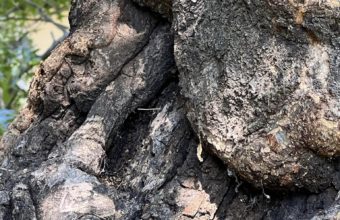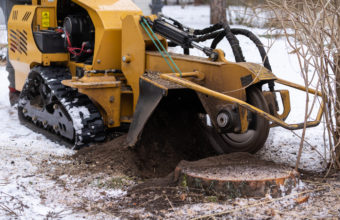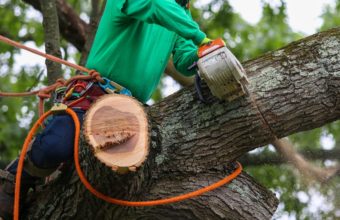Yes, it can be bad for tree branches to touch your roof, and it’s not advisable to allow branches to make contact with the roof of your home.
Here are several reasons…
- Damage to Roofing Materials – Tree branches can scratch, puncture, or wear down roofing materials such as shingles, tiles, or roofing membranes. Over time, this can lead to leaks and water damage inside your home.
- Gutter Clogging – Overhanging tree branches can drop leaves, twigs, and other debris onto your roof and into your gutters. This can clog the gutters, preventing proper drainage and causing water to overflow, potentially damaging both the roof and the foundation.
- Excess Moisture – When tree branches touch the roof, they can trap moisture against the roofing materials. This moisture can lead to the growth of algae, moss, and fungi, which can deteriorate the roof and reduce its lifespan.
- Pest Access – Tree branches can provide a pathway for pests, such as squirrels, raccoons, and insects, to access your roof and potentially your home. These pests can cause damage and create nuisances.
- Fire Hazard – In regions prone to wildfires, tree branches touching the roof can create a fire hazard. Embers from wildfires can easily ignite overhanging branches and spread to the roof.
To prevent these issues, regularly inspect your roof and trim tree branches that come into contact with it.
Here are some guidelines for safely trimming branches near your roof…
- Safety First – Trimming trees near your roof can be hazardous. If the branches are close to utility lines, it’s crucial to hire a professional tree trimmer or arborist with the necessary equipment and experience.
- Proper Pruning – Use proper pruning techniques, making clean cuts just outside the branch collar and branch bark ridge. Avoid leaving stubs that can attract pests and promote decay.
- Timing – The best time to prune branches near your roof is during the dormant season (winter) when the tree is not actively growing. If there are immediate safety concerns, light pruning can be done year-round.
- Consider the Tree’s Health – Be mindful of the overall health of the tree when pruning. Removing too many branches or major limbs can stress the tree and impact its well-being.
- Regular Maintenance – Keep an eye on your trees and schedule regular maintenance to prevent branches from growing too close to the roof. It’s easier to manage when branches are small and manageable.
It is not advisable to allow tree branches to touch your roof, as it can lead to various problems, including roof damage, gutter issues, and potential pest infestations. Regular tree maintenance and prudent pruning can help ensure that your trees and roof coexist harmoniously.






